Kevin Roche, the Dublin-born architect who died on Friday, at the age of 96, was a designer of modernist buildings, at once bold and refined, that gave striking new identities to corporations, museums and institutions around the world.
He was one of the rare architects who was admired and trusted by corporate executives, museum boards and government officials, who allowed him wide leeway in expressing his restless formal imagination. He was softly spoken, with a distant echo of an Irish accent, but it was an understated manner that belied the self-confidence that the buildings he made for his patrons radiated.
He created such distinctive works as the Ford Foundation headquarters in midtown Manhattan, an elegant palazzo of dark metal and glass built around a garden atrium and finished in 1967; the Oakland Museum of California (1968), a museum whose terraced roof functions as a public park; the General Foods headquarters in Rye Brook, New York (1982), a glass version of a grand classical villa; the sprawling headquarters of Union Carbide in Danbury, Connecticut (1982), a futuristic machine for parking and working; the headquarters of the JP Morgan Bank on Wall Street (1990), a skyscraper in the form of a classical column; and Convention Centre Dublin (2010), his only major Irish project. And he put an indelible stamp on the Metropolitan Museum of Art in New York.
Kevin Roche's formidable body of work sometimes intersects fashion, sometimes lags fashion, and more often makes fashion
In 1982 Roche was awarded the Pritzker Architecture Prize, widely considered his profession’s highest honour. In its citation the jury said, “In this mercurial age, when our fashions swing overnight from the severe to the ornate, from contempt for the past to nostalgia for imagined times that never were, Kevin Roche’s formidable body of work sometimes intersects fashion, sometimes lags fashion, and more often makes fashion.”
The jury acknowledged that his work was hard to characterise and that his buildings outwardly had little in common. To Roche, however, there was nothing inconsistent about them; although he loved strong, memorable forms, he saw architecture as a matter of problem solving as much as shape making.
And he believed that because each building emerged out of a different situation, each called for something very different. It was a view he took from his mentor, Eero Saarinen, whose thriving architectural practice formed the foundation of Roche's own.
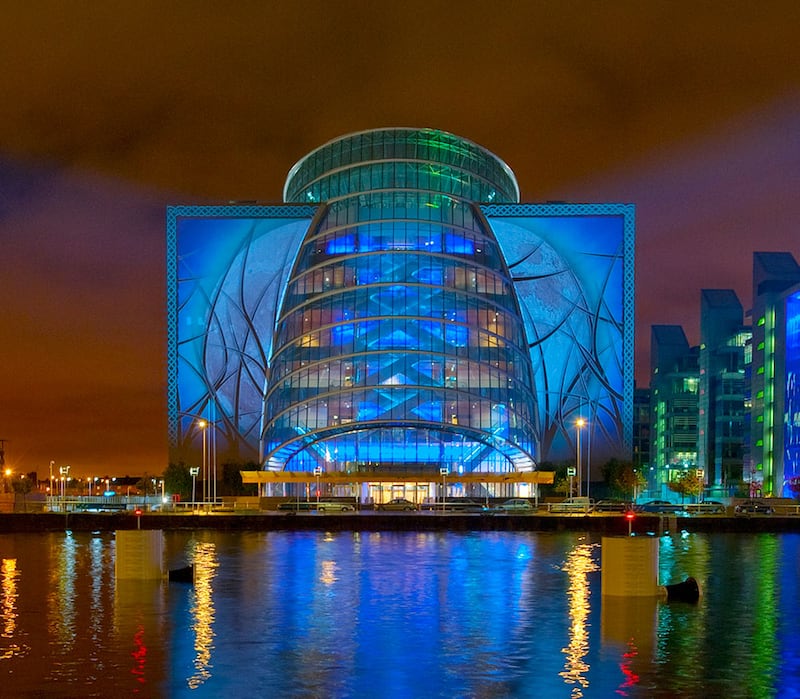
Roche was hired by Saarinen in 1950, and before long he became the architect's chief design associate, working on projects like the CBS Building in New York (known as Black Rock); the TWA Terminal at Kennedy Airport; Dulles International Airport, outside Washington; and the Ingalls Skating Rink at Yale University.
When Saarinen died suddenly, in 1961, at 51, it fell to Roche and John Dinkeloo, another Saarinen lieutenant, to keep the office going and complete Saarinen's numerous unfinished works. As they began to take on new projects of their own, the Saarinen office transitioned into Kevin Roche John Dinkeloo and Associates. Dinkeloo died in 1981, at 63, after which Roche headed the office himself.
Roche was the favoured architect of the Metropolitan Museum of Art; he designed all the wings of the museum’s expansion, beginning with the Lehman Pavilion, a sunken space with a central skylit gallery surrounded by a series of rooms, which opened in 1975.
It was as a sculptor of modernist shapes in glass that Roche seemed most comfortable. He and Dinkeloo had been interested in the technology of glass since their early years with Saarinen, when Roche, looking at a pair of reflective sunglasses, proposed developing a reflective glass that could be used on buildings. One of his first major projects was a trio of glass pyramids that Roche built as the headquarters for College Life Insurance Company in Indianapolis, completed in 1971.
A few years later he designed One United Nations Plaza in New York, a sculptural skyscraper of gridded blue-green reflective glass that is nearly as abstract as his pyramids. The tower was the home of the UN Plaza Hotel (now the Millennium Hilton New York One UN Plaza), for which Roche designed a set of public spaces based on an intricate design of trelliswork and mirrors, endlessly reflecting. (When management wanted to renovate the hotel’s restaurant and bar in 2015, preservationists protested that Roche’s design was one of the city’s finest interiors from the 1970s, and persuaded the hotel to reverse course.)
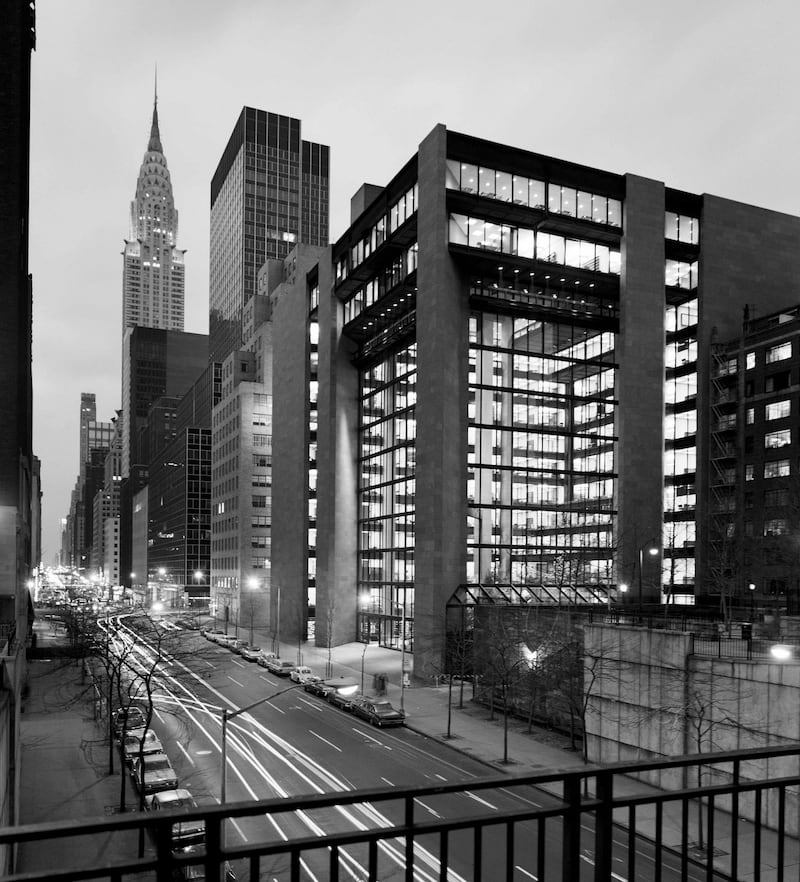
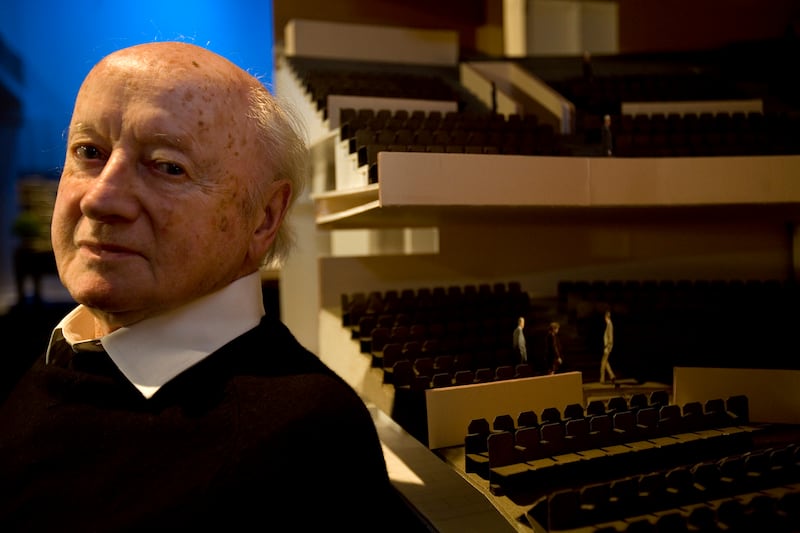
The Metropolitan Museum of Art was not Roche’s only long-term client. One of his most important legacies from Saarinen was his relationship with J Irwin Miller, chairman of the Cummins Engine Co and a patron of architecture. Miller had transformed Cummins’s hometown of Columbus, Indiana, into an architecture Mecca, with buildings by both Saarinen and his father, Eliel Saarinen, in addition to others by IM Pei, Robert Venturi (who died in September), César Pelli, Richard Meier and Skidmore, Owings & Merrill.
Roche met Miller when Roche was put in charge of the house in Columbus that Saarinen was designing for the Miller family, an assignment that confirmed Roche’s importance in the Saarinen office. After Saarinen’s death, Miller began to turn to Roche for commissions.
Roche designed numerous projects for Cummins, including its corporate headquarters. Although he usually declined to do private houses, he, like Saarinen, made exceptions for Miller; in 1982, he designed a lavish residence for him and his wife, Xenia Simons Miller, in Hobe Sound, Florida.
For all Roche's delight in creating crisp, nimble architectural shapes in glass, some of his most notable early work came across as anything but light
For all Roche’s delight in creating crisp, nimble architectural shapes in glass, some of his most notable early work came across as anything but light. For one of the most important projects he worked on with Saarinen, the John Deere headquarters in Moline, Illinois, Roche proposed developing a kind of steel that could be allowed to rust naturally. The resulting rough, reddish-brown product, Cor-ten, became a common building material.
While the elegant Deere building, completed in 1964, was widely admired, Roche used Cor-ten to considerably less critical acclaim on two projects in New Haven, Connecticut: the tower headquarters of the Knights of Columbus (1969) and the adjacent New Haven Coliseum (1972). The image there was anything but light, and the rusting steel and heavy, dark-brown masonry blocks and gargantuan columns gave the complex an ominous tone.
Vincent Scully, the Yale architecture historian, wrote that those buildings and another Roche project in New Haven, a sprawling concrete high school, “all share a kind of paramilitary dandyism which seems especially disturbing at the present moment in American history”.
Roche was not pleased by Scully’s view that his assertive forms somehow reflected the bombastic and overbearing elements of the United States during the Vietnam War. In the Knights of Columbus tower, in which the steel beams supporting each floor are like huge bridges connecting four enormous circular piers at each corner, Roche felt that he was really just exploring architectural ideas, experimenting with scale and trying to figure out new ways in which to organise and erect a tall tower.
Although Scully never moderated his feelings towards much of Roche’s work of the late 1960s, the two men, neighbours in the New Haven architecture community, eventually became friendly, and Roche was among the eulogists at a memorial service for Scully, who died in 2017.

Éamon Kevin Roche was born in Dublin in June 1922 to Éamon and Alice (Harding) Roche. "At the time, after Ireland was seeking independence, my father fought on the republican side and spent time in jail," Roche told The Irish Times in 2017. "I was born when he was in jail. So my mother was kind of destitute, and I was born over her sister's shop. When he got out of jail, my father took a job in a creamery. Typical for him, he took over the neighboring creamery within a year."
His father went on to head the largest dairy-farm co-operative in Ireland, in Mitchelstown, Co Cork, where Kevin grew up; he was educated by the Christian Brothers and, at Rockwell College in Co Tipperary, by the Holy Ghost Fathers. When Roche was 19, and a year into his architecture studies at University College Dublin, his father gave him his first commission, a piggery for 1,000 hogs. “I designed it. And supervised the building of it,” he said. “I had the men building a wall. I think they thought, Oh, boss’s son; we’ll humour him. And I kept telling them to go higher. And of course it all came down. And all you can hear is muttering: ‘F**king eejit.’ But I learned a lot building that piggery. And I had a good time building it. So that’s what got me interested. I think I got a little bit better at it since.”
Roche's earliest mentors were the new, stark modernists. He worked with the Dublin architect Michael Scott on Busáras and Donnybrook bus garage, and later relocated to London to work for Maxwell Fry.
Mies looked at it, my design, and said: 'You could do that, you know, but I would not.' That was the extent of his teaching
"Michael Scott had just a small office at that time," Roche said. "And one of the first big jobs was Busáras. The leading architects of the time were in London. So I was with Maxwell Fry for nine months. It was another small office. And they were very generous considering I hadn't been in the war and the five other guys were all ex-RAF. They never raised the question: why the hell weren't you there? They were very good architects who went on to some great work. Then I read in an architectural magazine about Ludwig Mies van der Rohe being the greatest architect. So I thought, I have to study with him."
He moved to the United States in 1948 to study under Mies at Illinois Institute of Technology in Chicago.
“Mies only said one thing to me,” Roche said. “We were asked to design a house, and it was snowing in Chicago. It’s a place that gets three or four months of snow a year. So I drew a pitch roof. And Mies looked at it, my design, and said: ‘You could do that, you know, but I would not.’ That was the extent of his teaching.”
Finding Mies’s approach not sufficiently socially engaged, he left after a year, and joined Wallace K Harrison’s team of designers working on the United Nations headquarters. When the design was complete, he was laid off, but he managed to get an interview with Saarinen, whose practice, then small, was beginning a rapid ascent to the top tier of American architecture.

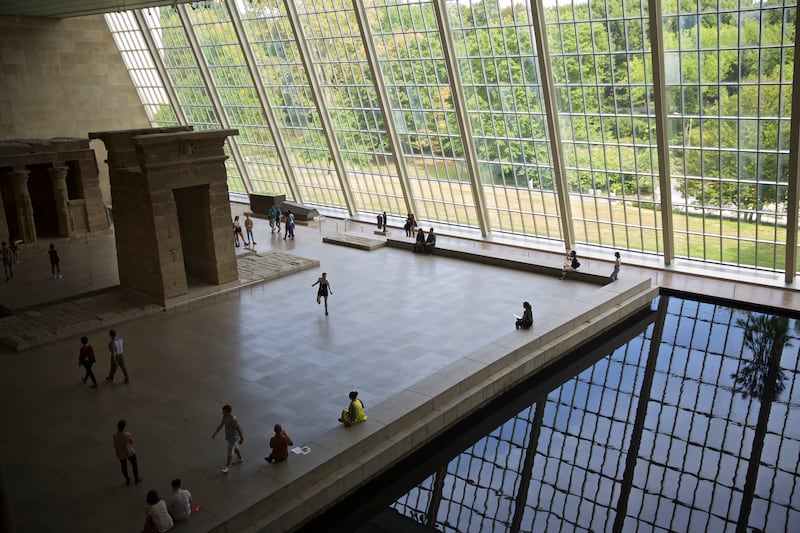
Roche moved to Saarinen’s office, in Bloomfield Hills, Michigan, and was assigned to work on the General Motors Technical Center, a sprawling campus of 24 modern buildings that would become emblematic of corporate architecture of the early 1950s.
When Saarinen died, in 1961, his office had grown from 10 employees to 160, and he was doing some of the most important architectural projects in the country. He was also on the verge of moving his office from Michigan to Hamden, outside of New Haven.
Roche did what he thought Saarinen would have wanted, he said, which was to keep everything going: all the staff remained, all of the buildings moved forward as planned, and even the cross-country relocation of the office went ahead just weeks after Saarinen’s death.
The only thing Roche postponed was his wedding, to Jane Clair Tuohy, which had been scheduled for the month Saarinen died, September. They did eventually marry, in June 1963, and had two sons, Éamon and Paud, and three daughters, Anne, Denis and Alice. Roche is survived by his wife, his children and 15 grandchildren.
Kevin Roche couldn't name his favourite project, but he could name the most problematic building of his career: Convention Centre Dublin
Roche became the architect of choice for large corporations seeking a suburban headquarters that would also stand as a one-of-a-kind work of architecture. He was particularly interested in integrating interior gardens into work spaces, as well as in finding different ways in which to hide the automobile, the bane of the office park. Almost no Roche building sits in a sea of surface parking: parking is typically underneath the offices.
Roche also designed the headquarters of Unicef, the Central Park Zoo and the Museum of Jewish Heritage, all in New York, as well as the headquarters for Bouygues, the French construction company. For Bouygues he designed a version of a French chateau outside Paris in concrete panels and reflective glass, set over parking – a sprawling corporate Versailles in glass.
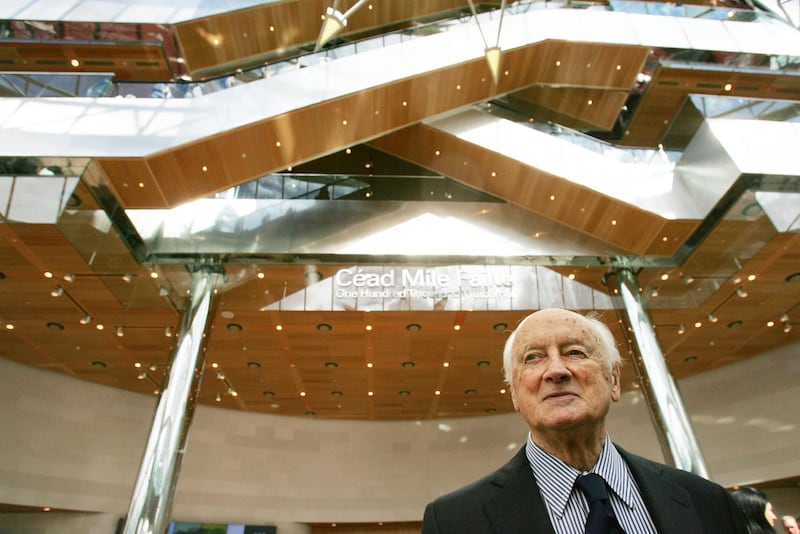
Kevin Roche couldn’t name his favourite project, but he could name the most problematic building of his career: Convention Centre Dublin, which, apart from the piggery, a cheese warehouse and some other early Mitchelstown Creameries projects, was his only Irish construction. “There were so many government agencies, and none of them seemed to be talking to each other,” Roche said about the centre, which opened in 2010. “You couldn’t get a straight story out of any of them. It was by far the most difficult time. We had never come across anything like it. They’ll probably blow it up when they get a chance.”
In 1993 Roche was awarded the Gold Medal of the American Institute of Architects, the highest honour the institute bestows. When Roche received the Pritzker, in 1982, he delivered an acceptance speech that displayed both his capacity for self-deprecating humor and his belief that architecture was a noble pursuit. He quoted from a letter he had received complaining that his work was “moribund” and that the Pritzker jury “must be out of their minds” to have given him the prize.
He could only respond, he said, by asking: “Is not the act of building an act of faith in the future, and of hope? Hope that the testimony of our civilisation will be passed on to others, hope that what we are doing is not only sane and useful and beautiful, but a clear and true reflection of our own aspirations. And hope that it is an art, which will communicate with the future and touch those generations as we ourselves have been touched and moved by the past.” – New York Times, with additional details from The Irish Times archive












